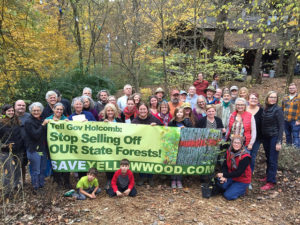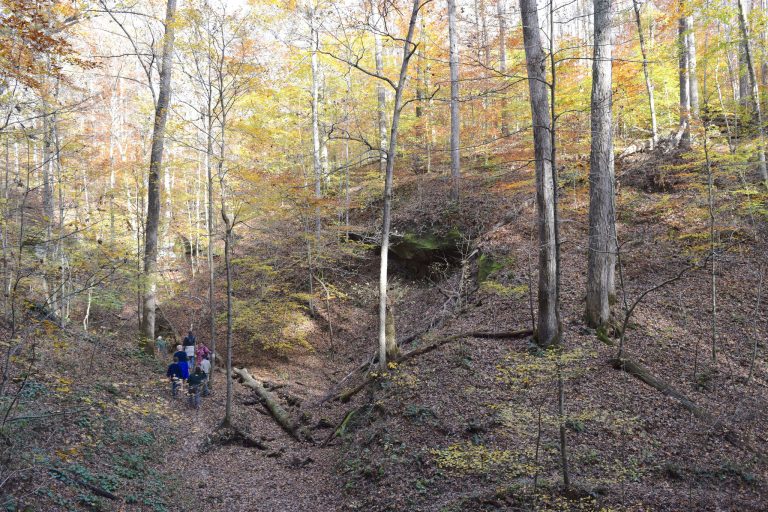by Dave Seastrom
In these times if we want to see something positive in the world, we have to create it ourselves. The most effective way to get something done is to band together with like-minded people and work for a common goal.
The Indiana Forest Alliance exemplifies this ideal.
For several years we (IFA) fought the exploitation of our state forests, and in that time we’ve grown from a tiny group who showed up at timber sales to protest the sale of our legacy to the highest bidder, to an organization that is working hand in hand with legislators to forge laws that will protect our forests. We’ve also become a science-based preservation group that has conducted an extensive inventory of all living things in our forests, known as the Ecoblitz.
 The timber sale in the formerly preserved Yellowwood Back Country Area that took place one year ago has galvanized the movement and increased our membership tremendously. Dr. Leslie Bishop authored a letter to the Governor urging him to preserve a portion of our forests that was signed by 240 professors from universities all across Indiana. We also generated 5,070 contacts with Governor Holcomb that eventually led to a face to face meeting with him this past August.
The timber sale in the formerly preserved Yellowwood Back Country Area that took place one year ago has galvanized the movement and increased our membership tremendously. Dr. Leslie Bishop authored a letter to the Governor urging him to preserve a portion of our forests that was signed by 240 professors from universities all across Indiana. We also generated 5,070 contacts with Governor Holcomb that eventually led to a face to face meeting with him this past August.
These actions have changed the status of our organization, and where once we were routinely ignored, we are now asked to sit at the table and discuss our concerns.
Publicly owned land provides a rich opportunity to create large contiguous sections of undisturbed forest that can be allowed to mature into true old growth conditions that will act as a repository for the plants and animals that need this environment to thrive. We want to return the protected status of the Back Country Areas, and to establish large protected tracks with our 13 state forests, for plant and animal habitat, and multi-use recreation in a wilderness setting.
We also want to protect the integrity of our hiking trails by establishing a sufficient buffer that would leave the trails undisturbed by logging. We seek a mix in forest management that includes the interests of all stakeholders, and not just those of the timber industry, and we support the creation of new forests on marginal farm land that would provide a timber resource for the future.

